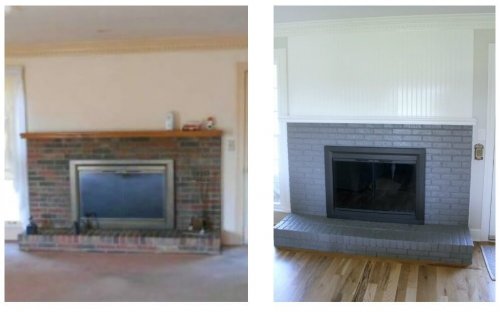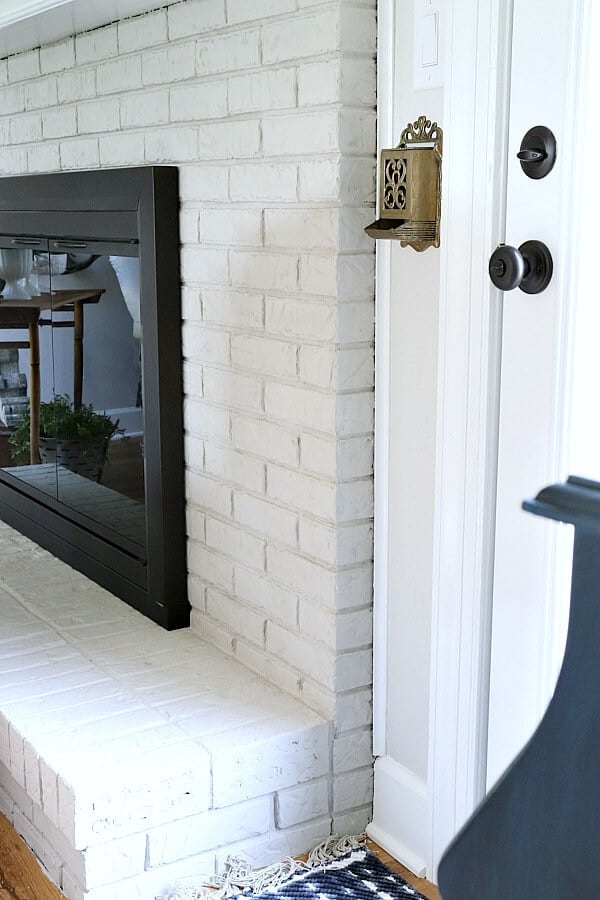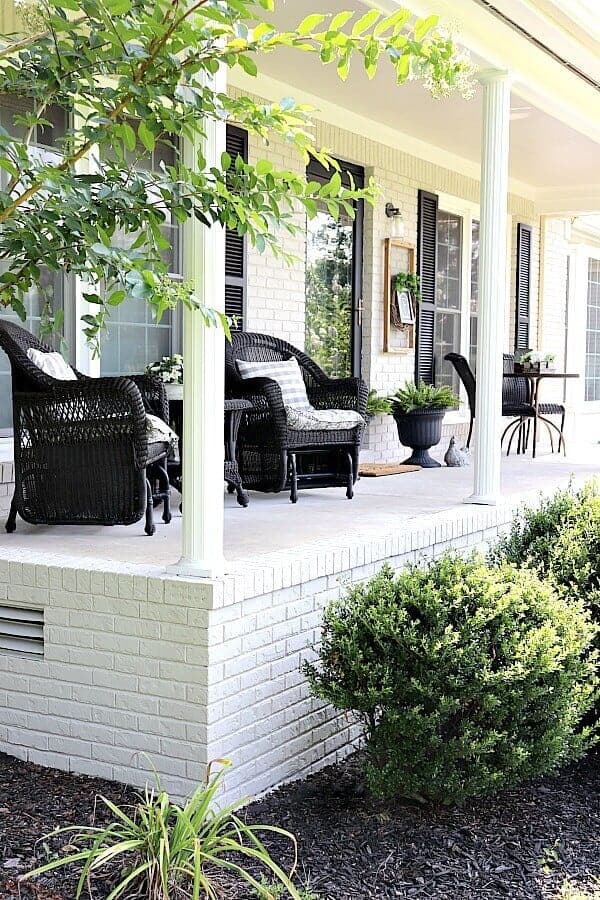Limewashing a Painted Brick Fireplace
Thank you to Romabio for partnering with us on this post and inspiring our creativity. Here’s how Limewashing a Painted Brick Fireplace can work for your home!

If you have followed along with us as we have been slowly updating the exterior of our home, then you know that are embarking on the biggest DIY we’ve ever attempted – Limewashing the exterior of our home.

Romabio is a family run company that is changing the face of exteriors. They offer eco-friendly masonry products that are mineral based and toxin free.
Plus they are user-friendly, which makes this DIY blogger happy and honored to be working with a company that has the same values that we hold dear.
Back in February, we selected two color samples of their Classico Limewash to test out on our brick.
The samples come in quart containers and are more than enough to try out a swatch. After settling on a color, we had lots of yummy lime wash samples to work with.
Being one who hates to waste anything, I started looking around for ideas on how I can incorporate these samples for other creative uses.
We updated our fireplace from it’s sad state when we moved in with a coat of paint. I lived with it for a while, but something about it bothered me.

It wasn’t the hue per se, but the sheen. It looked too shiny for my likes.
So I had planned on redoing this brick anyway and when these samples arrived, I knew exactly what I wanted to do!
What I love about this company is how helpful they are. I called the customer service department to ask questions about lime washing painted brick. They stated that their product is best applied to untreated brick, but there was an easy solution.
Primer! And not just any primer will do. It has to be a special primer for painted masonry.
Paint acts as a layer of plastic that the lime wash won’t adhere to, so you have to prep the surface with this primer that has the right chemical makeup to allow that to happen. It’s the same thought process when sanding a surface you are making over. You want the give the surface grit for the paint or stain to adhere to. But since you can’t sand brick – a specialty primer does the trick!
Romabio sells such a primer and they are so wonderful to work with! You can contact them directly to have their BioGrip Micro primer shipped to you.
UPDATE: Their BioGrip Micro Primer is now available at Amazon!
Note: using Classico Limewash over painted brick, with the masonry primer, means you can’t have a “wash off” effect. It can only be a solid, opaque coat.
I tried out different ratios of mix to find the right coverage for the look I wanted. What finally worked for my fireplace was a custom 3 to 1 mix of limewash and water. I applied the Classico Limewash in Nube Gray in two coats.

The lightened look of our brick is just what I had been hoping for! And the sheen – well that’s the best part.
It’s a gorgeous, chalky finish that now seals the brick, making it the focal point of the room!

If this is the look you’ve been wanting, I encourage you to head over to Romabio’s site and read more about the application process.
And if you want to try out a few samples of Romabio’s Classico Limewash, they are available at select Home Depot stores, or Lowe’s.
Stay tuned for the big reveal of our exterior makeover in the next few weeks! But if you want a sneak peek – check out our Porch Makeover I shared earlier this week.

Pin Limewashing a Painted Brick Fireplace for later!








That is a great question! You can definitely create a new look, but if the paint is acrylic, you will either have to remove it or use Romabio’s MicroGrip Primer and their Nube Gray to get that look.
Hope that helps!
I have a grey stone fireplace the previous owners painted white. If I use the limewash, can I achieve the grey stone look it previously possessed?
I would say to definitely use Romabio’s Classico Limewash. It is super easy to use and is very DIY-friendly!
I have a outdated brown brick fireplace, I want to whitewash, but don’t know what to use. So many choices. It has never been painted
Hi Karen – thanks for reaching out. Since I wasn’t doing the distressed look, there was no need to do the spray/wipe distressing method. That is only if you are wanting that aged brick look. Hope that helps!
Since you weren’t washing off the paint, did you spray with water and wipe off like the site said to do?
Thanks!
The primer is really easy to work with – just a simple one to one dilution rate. I waited overnight to allow the primer to dry, but I believe the time is 4 hours.
Thank you! Any special ore woek for the primer? How long did you wait after
Applying primer before painting the walls? Thanks!!
Hi Karen – thanks for reaching out! I used the 1 quart for my fireplace and even had quite a bit left over! Hope that helps!
Love the fireplace makeover. Can you tell me how much h paint you used? My fireplace goes to a vaulted ceiling and trying to decide if I need a quart or Gallon? Thanks!
Both chairs are garage sale finds that I recovered myself. You can find the tutorials on my site! 😉
Where did you get your chairs?.?.
Thanks for reaching out! Our walls were painted with Sherwin Williams Crushed Ice. Its such a nice neutral color!
I love the color of your living room walls. Can you share what it is please?
Thanks
This is quite and interesting process.. I wasn’t familiar with lime washing.. The fireplace looks great I’m headed to romabios now. Hugs!